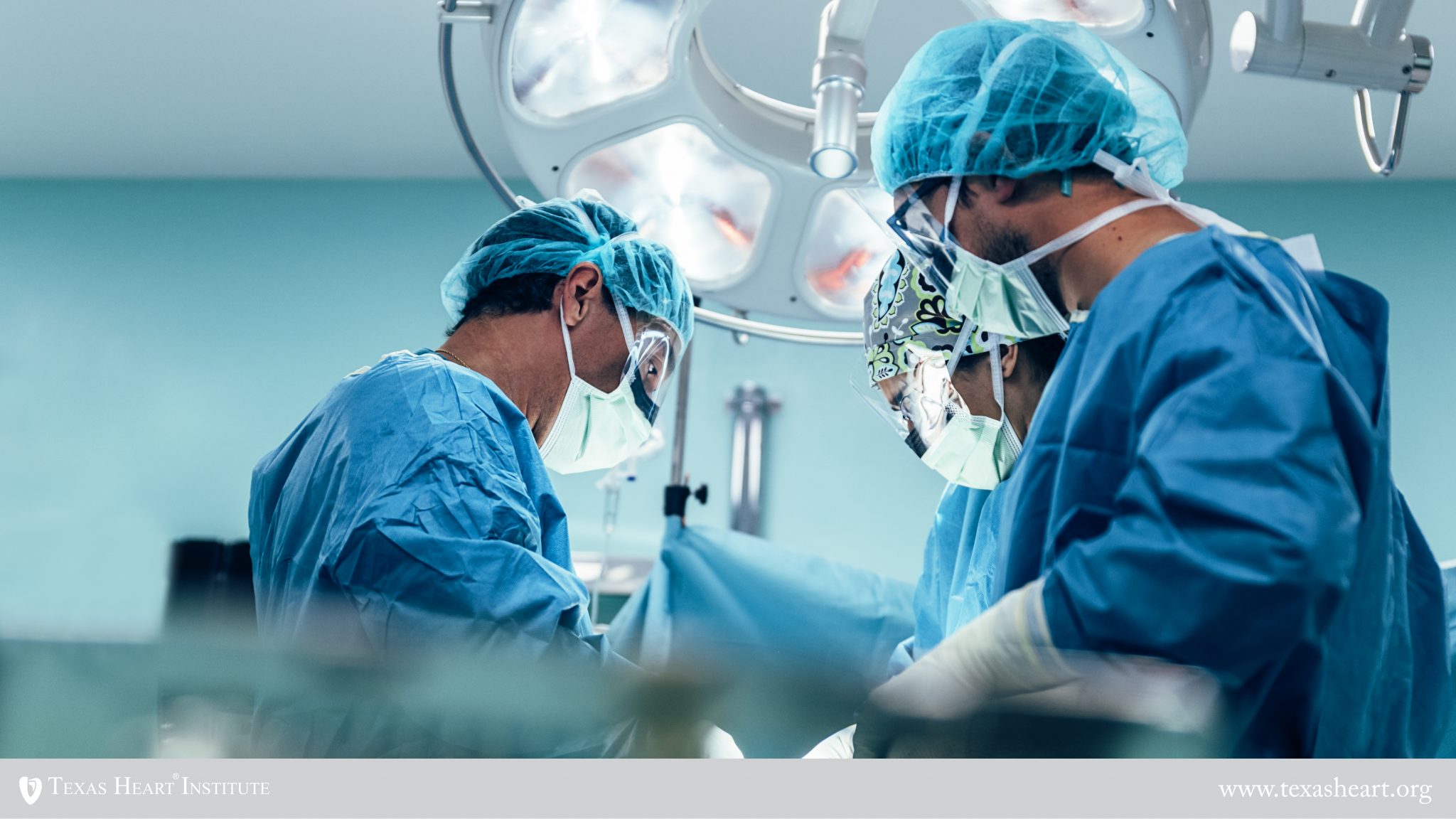Aortic Repair: It Truly Does Take a Village

A recent article in the Journal of the American College of Cardiology highlights the value of surgeons working together with interventional cardiologists and endovascular experts to provide the most appropriate treatment options for patients with thoracoabdominal aortic aneurysms.
Senior author Joseph S. Coselli, MD, cardiothoracic surgeon at Baylor College of Medicine and the Texas Heart Institute in Houston, Texas, noted that “Although thoracoabdominal aortic aneurysms are uncommon, they can be life-threatening and should be monitored closely once they’ve been identified so that elective repair can be planned before an emergency arises. Open surgery is still the standard approach to treatment, but endovascular techniques are rapidly evolving. Numerous factors affect which course of action to take for an individual patient, which is why we rely on a multidisciplinary collaborative team that includes both surgeons and interventional cardiologists to guide decision making about the best possible treatment course.”
The thoracoabdominal aorta extends from the downward bend in the aortic arch (near the heart) to the abdomen. Aneurysms (balloon-like bulges in a weakened arterial wall) and dissections (a tearing or separating of the layers of the aortic wall that progressively enlarges over time) can develop anywhere along this tract and can include all of it or only a portion. Whereas most (70%) of these aneurysms or dissections result from fatty plaque buildup related to the aging process, high blood pressure, smoking, abnormal cholesterol levels, or chronic obstructive pulmonary disease (COPD), they can also be caused by inherited disorders (for example, Marfan syndrome).
Thoracoabdominal aortic aneurysms affect less than 1% of the population and account for only 10% of all aortic aneurysms. Although 70% of thoracoabdominal aortic aneurysms or dissections occur in men, they are 40% more lethal for women. Symptoms—that is, warning signs—often do not appear until the aorta has greatly expanded, ruptured, or dissected. Thoracoabdominal aorta repair is complex because it must incorporate key branching arteries that feed visceral organs such as the kidneys, gut, and liver.
Repair strategies for aortic disease have evolved over time. Traditional surgery, which requires opening the left chest and abdominal cavity, is highly invasive and more likely to be associated with end-organ complications and death, yet it provides a more durable repair. In contrast, newer endovascular methods, which access and repair the aorta through a blood vessel, are much less invasive, produce fewer early adverse events, and require shorter follow-up periods, but additional intervention is often needed. Postoperative paraplegia (paralysis of the legs and lower body) is a risk with both approaches but may be mitigated by protective measures—for example, cerebrospinal fluid drainage to promote blood flow to the spinal cord.
Either technique requires highly specialized expertise, and the best results are achieved when repairs are done in an elective (i.e., non-emergency) setting by an experienced multidisciplinary team that includes cardiothoracic and vascular surgeons, interventional cardiologists, interventional radiologists, anesthesiologists, perfusionists, and critical care physicians.
The decision to repair an aneurysm is based on patient symptoms, the aneurysm’s diameter and rate of expansion, and other clinical and anatomical factors. The extent of the aneurysm will determine whether endovascular repair is feasible.
Although long-term survival after either open or endovascular repair tends to be poor in these typically older patients, shorter-term outcomes after both open and endovascular repair are excellent when the procedure is done in a surgical center with extensive cardiovascular expertise. Ongoing monitoring and imaging will be necessary, and certain lifestyle changes, such as smoking cessation and blood pressure management, will be needed.
“The manuscript on surgical and endovascular repair of thoracoabdominal aortic aneurysms recently published by Dr. Joseph Coselli and co-workers is one of the best review manuscripts I have read on this topic. I would like to congratulate the authors on their detailed and non-biased view on the latest advances in the treatment of thoracoabdominal aortic aneurysms.” – Zvonimir Krajcer, MD, FACC, Interventional Cardiologist, Texas Heart Medical Group and Past President, International Society of Endovascular Specialists (ISEVS)
Read Report
Ouzounian M, Tadros RO, Svensson LG, Lyden SP, Oderich GS, Coselli JS. Thoracoabdominal Aortic Disease and Repair: JACC Focus Seminar, Part 3. J Am Coll Cardiol. 2022 Aug 23;80(8):845-856. doi: 10.1016/j.jacc.2021.05.056.
News Story By Jeanie F. Woodruff, BS, ELS

.svg)


